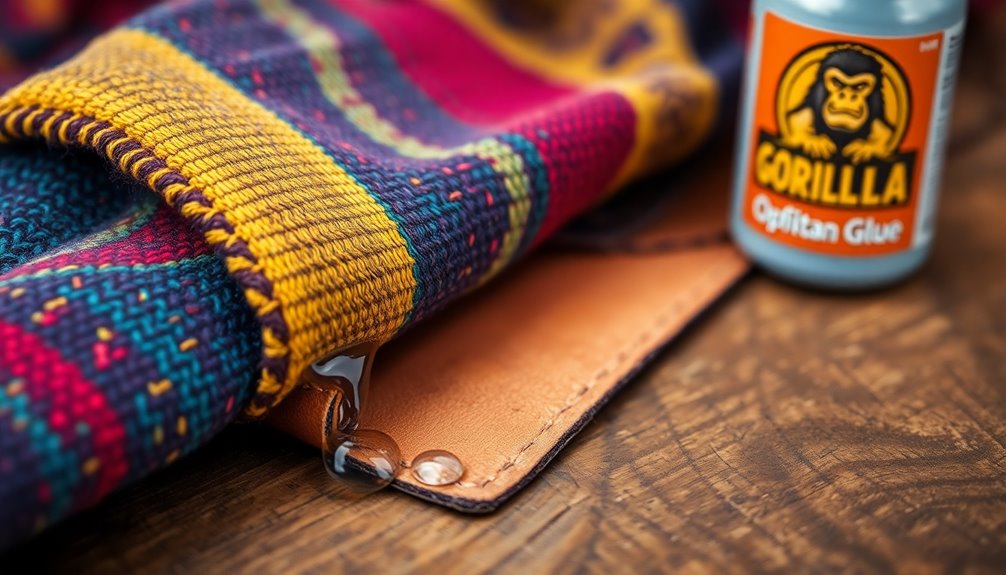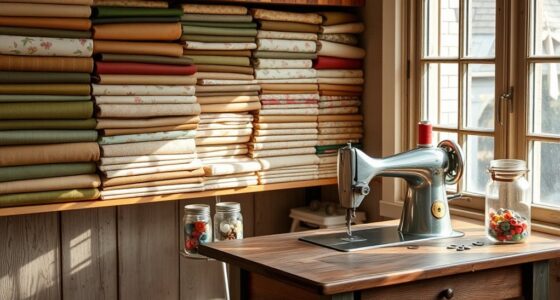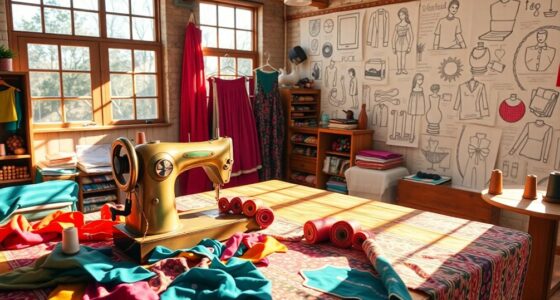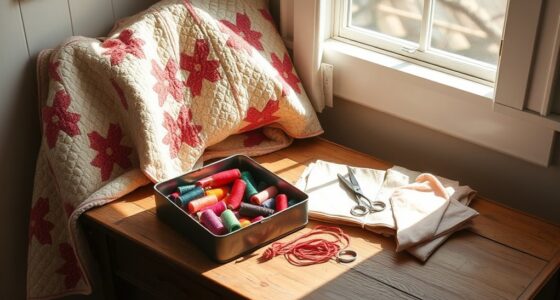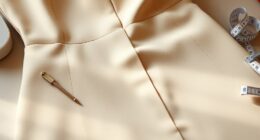Yes, you can use Gorilla Glue on fabric and leather. This powerful adhesive creates strong, flexible bonds and works well on natural fibers like cotton and leather. Just remember to apply it sparingly, as it expands while curing. Make sure the materials are clean and dry before you start. It's crucial to let it cure for at least 24 hours for the best results. There's more helpful info to take into account for your projects!
Key Takeaways
- Gorilla Glue is effective on fabric and leather, creating a strong, flexible bond suitable for various crafting projects.
- It works best on natural fibers like cotton and linen; test synthetic fabrics before use.
- Apply a thin layer to avoid excess expansion and potential seepage; a pea-sized drop is ideal.
- Allow the glue to cure for at least 24 hours for optimal adhesion before handling.
- Avoid using Gorilla Glue on delicate fabrics like silk or lace to prevent damage.
Understanding Gorilla Glue and Its Properties
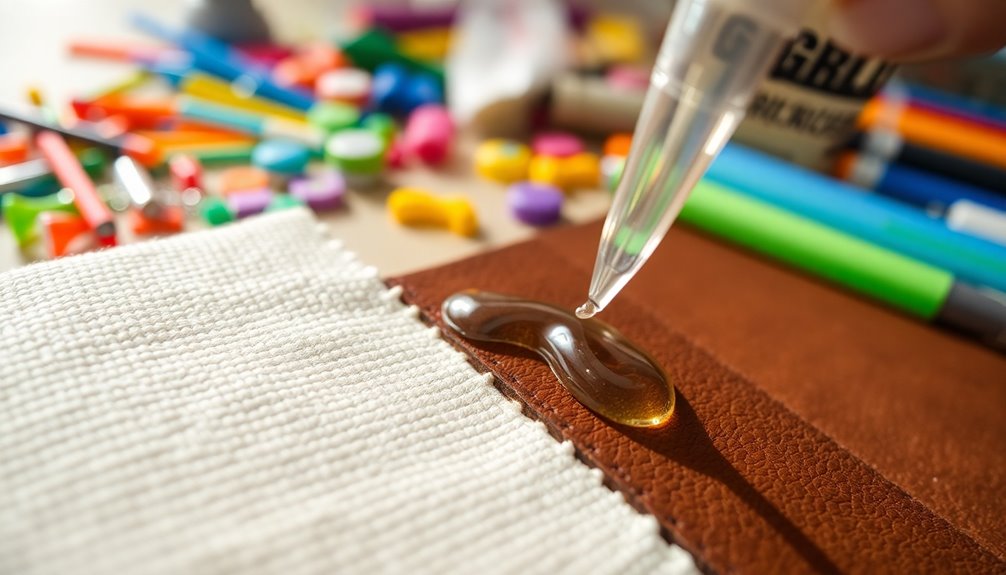
Gorilla Glue is a powerful adhesive that's perfect for bonding fabric and leather. Formulated to bond fabric, this polyurethane adhesive activates with moisture, creating a durable bond that's tough and flexible.
As it cures, Gorilla Glue expands, filling any gaps, but be careful—too much glue can seep out. Once cured, it's waterproof and can withstand extreme temperatures, making it suitable for both indoor and outdoor projects.
The glue dries clear, so your fabrics retain their original look, but you'll need to wait at least 24 hours before washing or ironing. Always test it on a small, inconspicuous area first to avoid any potential discoloration or stiffness.
With the right approach, Gorilla Glue can be your go-to for fabric and leather projects.
Best Fabrics for Gorilla Glue Applications
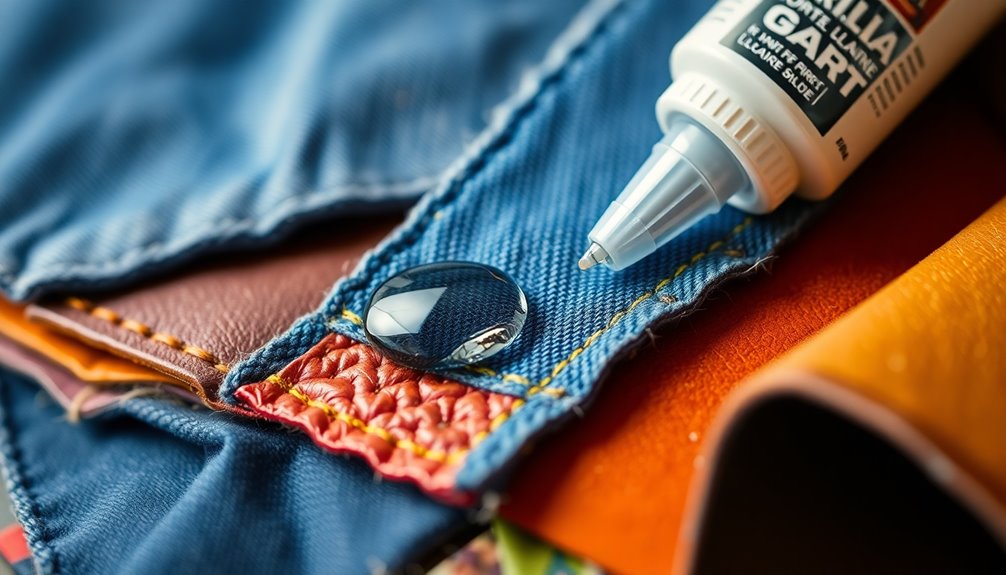
When choosing the best fabrics for Gorilla Glue applications, it's essential to evaluate the material's properties.
Gorilla Glue works effectively on natural fibers like cotton and linen; just apply it sparingly to avoid stiffness and discoloration.
For synthetic fibers such as polyester and nylon, always test on an inconspicuous area first to ascertain compatibility.
Leather, suede, and vinyl also benefit from Gorilla Glue's strong bonding capabilities—apply a thin layer and use clamps for a secure bond.
Once cured, the glue creates a flexible bond, making it ideal for crafts and home decor projects involving fabric while maintaining movement.
However, steer clear of delicate fabrics like silk or lace, as they may get damaged or fail during washing.
Step-by-Step Guide to Using Gorilla Glue on Fabric and Leather
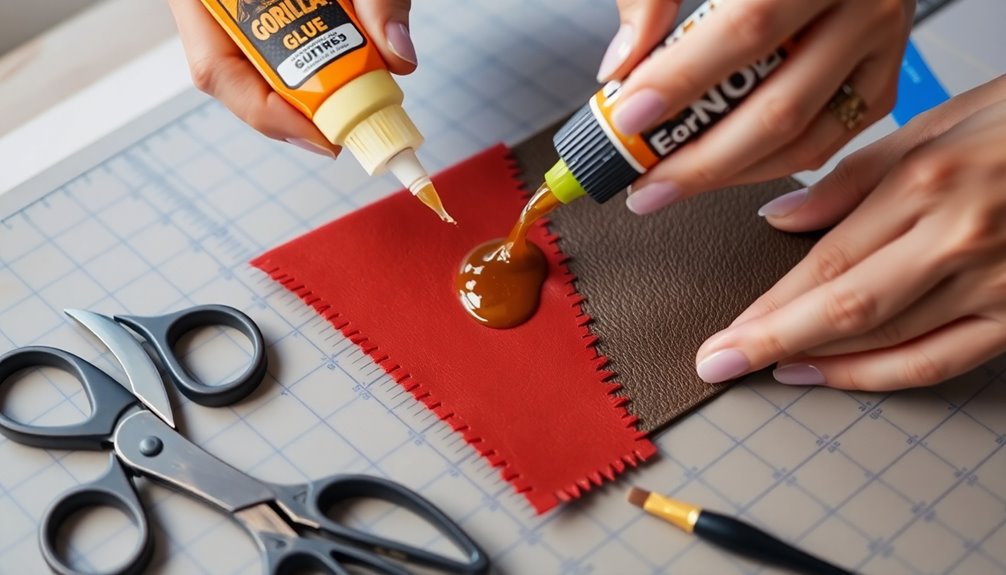
After selecting the right fabric or leather for your project, it's time to apply Gorilla Glue effectively.
First, test a small, inconspicuous area to verify there's no stiffness or discoloration.
Next, clean the fabric or leather by pre-washing without fabric softener to promote the best adhesion.
Apply a thin layer of Gorilla Glue to both surfaces using a pea-sized drop per square inch to avoid excess expansion.
Allow the adhesive to partially dry for about two minutes before joining the surfaces.
Secure them with clamps if necessary.
For a strong, permanent bond, let it cure for at least 24 hours before handling, and wait an additional three days before washing or ironing the bonded material for maximum strength.
Alternatives to Gorilla Glue for Fabric Projects

While Gorilla Glue is a popular choice for many projects, there are several alternatives better suited for fabric applications. Using fabric-specific adhesives can yield the best results for your projects. Fabric glue is designed to keep your fabric soft and flexible, making it perfect for sewing and repairs. Liquid stitch is excellent for hemming and mending, providing a permanent yet flexible bond. For quick crafts, hot glue can work, but use it sparingly to avoid stiffness. If you're working with delicate materials, opt for fabric-specific adhesives to prevent damage.
| Alternative | Best Use |
|---|---|
| Fabric Glue | General sewing projects |
| Liquid Stitch | Hemming and mending |
| Hot Glue | Quick fabric crafts |
Tips for Successful Adhesion and Repair
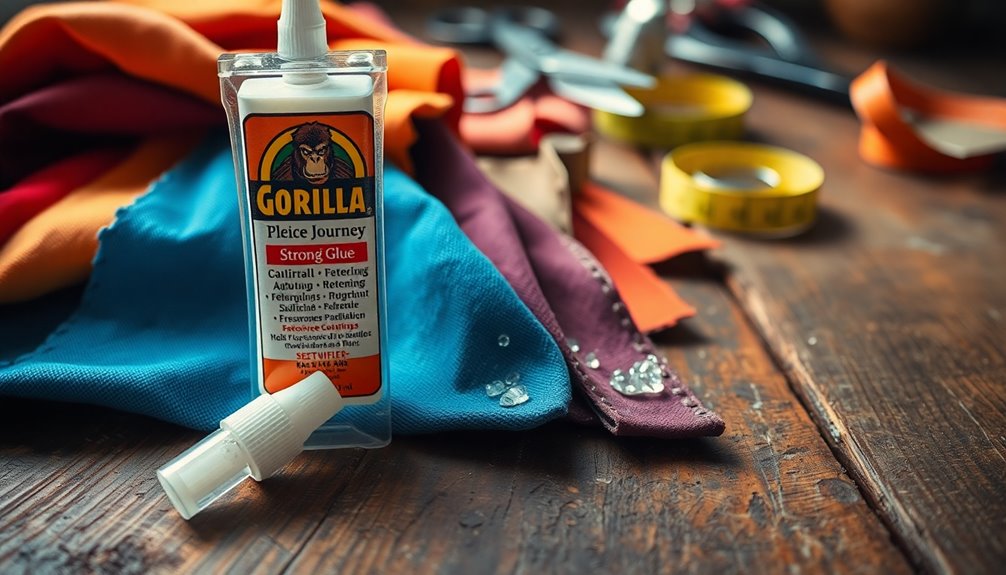
Achieving a strong bond with Gorilla Glue on fabric or leather requires careful preparation and application.
First, always test the glue on a small, hidden area to avoid stiffness or discoloration. When applying the glue, use it sparingly; a pea-sized drop per square inch is best to prevent excess expansion.
Make certain your fabric is pre-washed without fabric softener for better adhesion. Allow at least 24 hours for the glue to fully cure, and wait an additional three days before washing or ironing to guarantee the bond remains strong.
For leather, apply a thin layer and consider using clamps for a tighter bond, especially on the porous side. It’s important to allow the adhesive to fully cure before removing the clamps to ensure a strong bond. If not done properly, you may encounter issues like leather bubbling, which can compromise the aesthetic and structural integrity of your project. Understanding leather bubbling causes and effects can help you prevent these problems and achieve a flawless finish. Regularly checking your work during the drying process can also help mitigate any unwanted issues.
These tips for best results will help you achieve effective repairs.
Frequently Asked Questions
Can Gorilla Fabric Glue Be Used on Leather?
Gorilla fabric glue isn't the best choice for leather because it's designed for different materials.
If you want a strong bond, consider using a specific leather adhesive instead.
If you decide to try it, make certain to apply it sparingly to avoid stiffness.
Test it on a hidden area first to guarantee it doesn't discolor the leather.
Always follow the curing time recommendations for the best results in durability and flexibility.
Will Gorilla Glue Stick to Fabric?
Yes, Gorilla Glue will stick to fabric! It creates a strong bond, making it great for your fabric crafts.
Just remember to apply it sparingly since it expands as it cures. To avoid stiffness or excess glue seeping out, test it on a small, hidden area first.
Once cured, it's waterproof and dries clear, so your project will look neat.
However, be cautious with delicate fabrics that you wash frequently.
Can I Use Gorilla Glue for Crafts?
You might find yourself in a situation where your crafty ideas collide with a need for a strong adhesive.
Using Gorilla Glue for crafts is a great choice! It bonds materials securely and dries clear, ensuring your projects look neat.
Just remember to apply it sparingly, as it expands while curing. Always test it on a small area first to avoid any surprises.
With care, your crafts will shine beautifully!
What Material Does Gorilla Glue Not Stick To?
Gorilla Glue doesn't stick well to low surface energy materials like polyethylene and polypropylene, which means you might struggle with certain plastics.
Smooth surfaces, such as glass or polished metal, require proper preparation for effective bonding.
Additionally, non-porous materials can be problematic since the glue needs moisture to activate.
If you're working with delicate fabrics, avoid using this glue, as its strong adhesive properties can damage them during application.
Conclusion
To summarize, while Gorilla Glue can bond fabric and leather, it's not the ideal choice for every project. Its polyurethane formula expands as it cures, which can lead to stiff, bulky seams. For delicate fabrics or flexible leather, consider alternatives like fabric glue or hot glue. Curiously, many crafters swear by using Gorilla Glue for quick fixes, but it's important to know when to reach for a different adhesive to achieve the best results.
